If you want to know about the Roman architecture or Indus valley civilization or evolution of Hindu temple architecture, please click the link.
A Hindu temple is a complex structure that is comprised of several components, each serving a specific purpose.
- Temple is also called as Devalay or Devastan, Mandira (man + sthir)
- House of workship
- The temple is the focus for all aspects of everyday life in the community – religious, cultural, educational and social
- The temple is a place where God may be approached and where divine knowledge can be discovered.
- The temple is designed to dissolve the boundaries between man and the divine
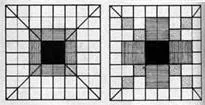
- Hindu temples are composed of one repeating unit – the square.
- For God’s own house, the form had to be perfect, and this limited the choice of shapes to the circle – a form without beginning and end, and the square – perfect for its symmetry
1) Introduction
- The temples are built on the principles of vastushastra, known as ” Shilpa Shasthra”.
- Yogic posture
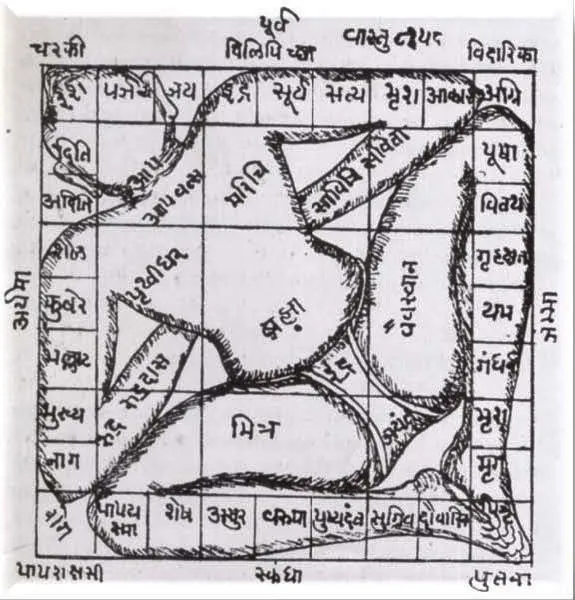
- By increasing the complexity in this system of proportion the most complex of forms could be achieved, but their basic unit remaining the square.

- By manipulation of this basic grid that the indian architect created the greatest temples

2) Major elements /component of temple

i) Entrance


ii) Mandapas/ Halls
Pillared outdoor assembly hall or pavilion used for public rituals, religious dancing and music, audience to sit.
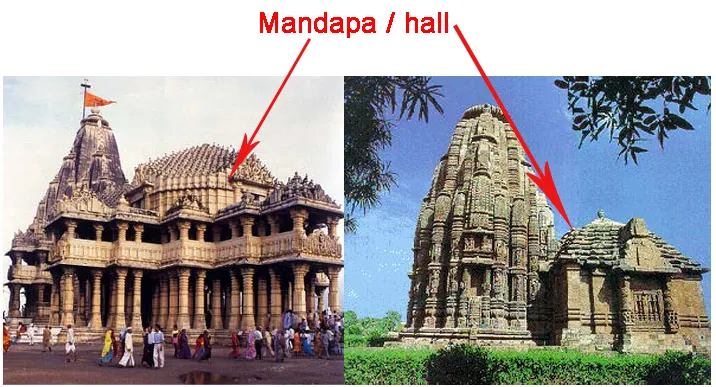
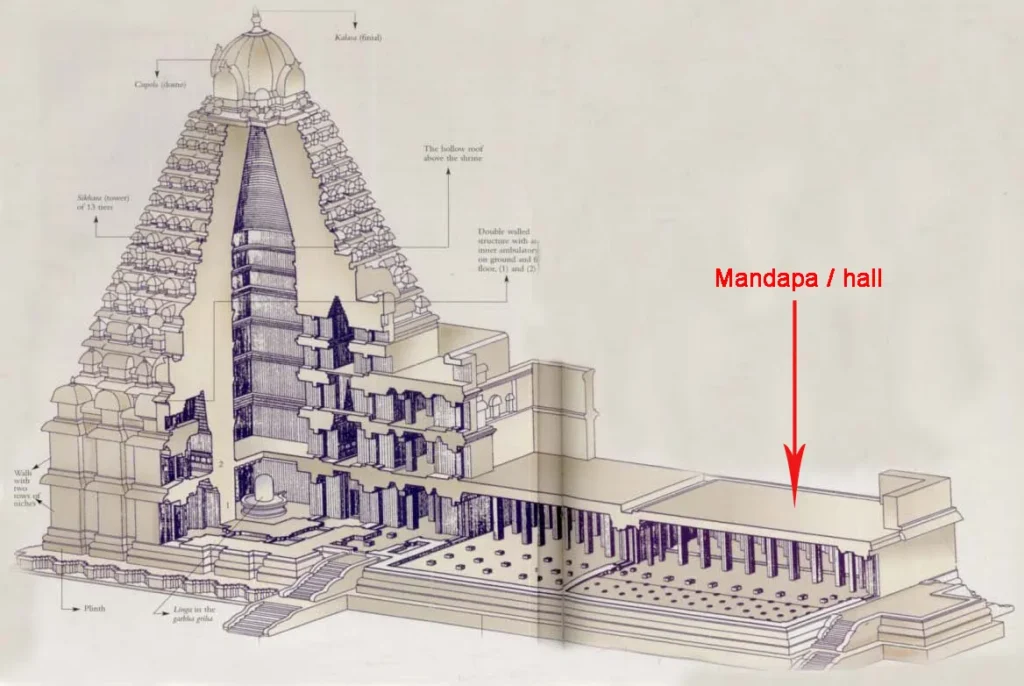
When a temple has more than one mandapa each one is allocated for a different function and give a name to reflect its use like.
- Sabha Mandap – for meeting
- Nritya Mandap – for dancing
- Kalyana Mandapa – for marriage function
- Asthana Mandapam – assembly hall
- Maha Mandapam – big hall for conducting religious discourse
iii) Garbhagriha
- It is the part of temple in which the idol ( murty ) of the god is installed
- It is a place that encourages meditation
- Circumambulation passage ( Pradakshina path ) is provided around it
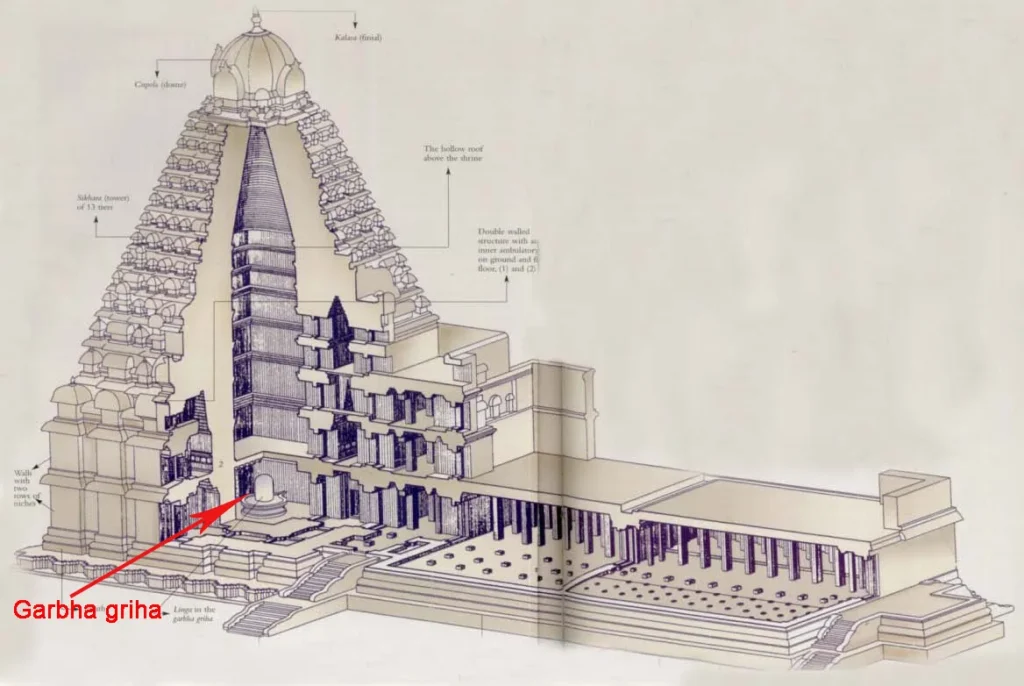
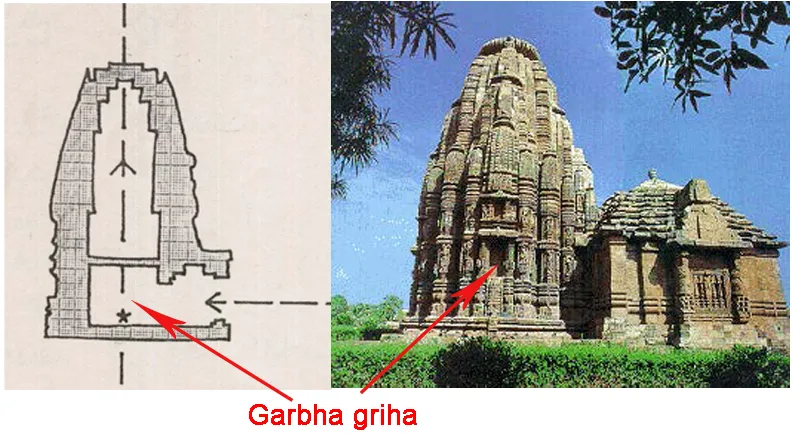
- Only priests are allawed to enter
- It is usually on the main horizontal axis of the temple which generally is an east-west axis
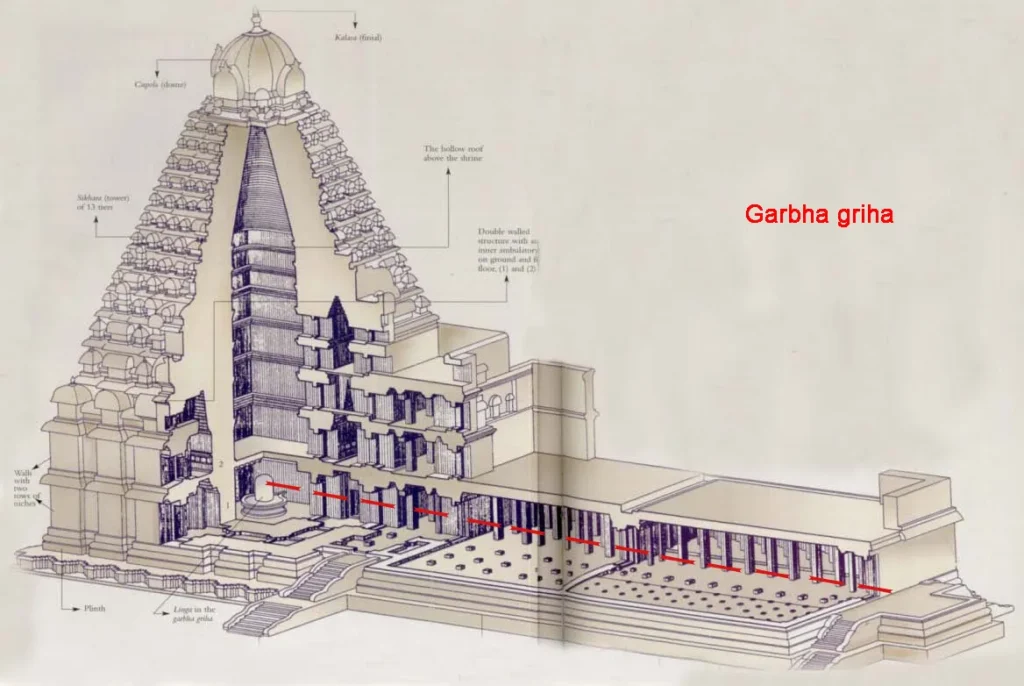
- Generally, it is a windowless dark and thinly chamber, intentionally created to focus the devotee’s mind on the tangible form of murty (God)
iv) Shikhar
- Sikhara or Vimanam literally means ” mountain peak “

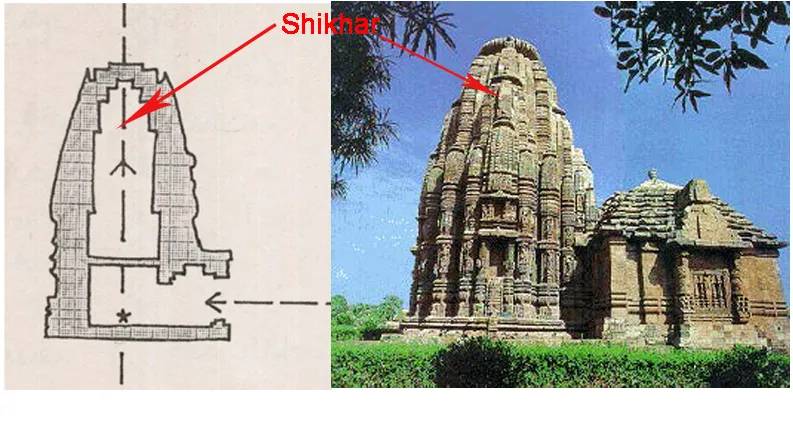
- It refer to the rising tower over the Garbh grih where the Murty (God) is situated
- It is the most prominent and visible part of a Hindu temples
- The gods have always been attracted to mountains and they have great mountains for the symbolism and appearance of the temple. There was an impulse to create soaring towers that looked like mountain ranges
- It is also a symbolism of connecting the link between men & God.
3) Major elements /component of temple
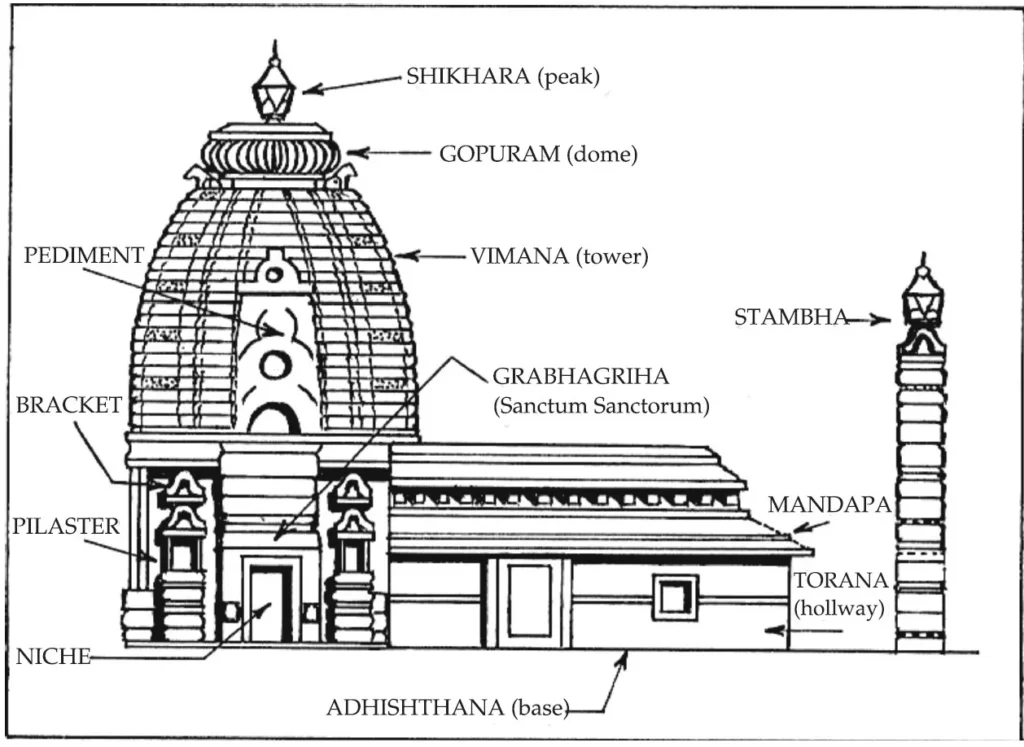
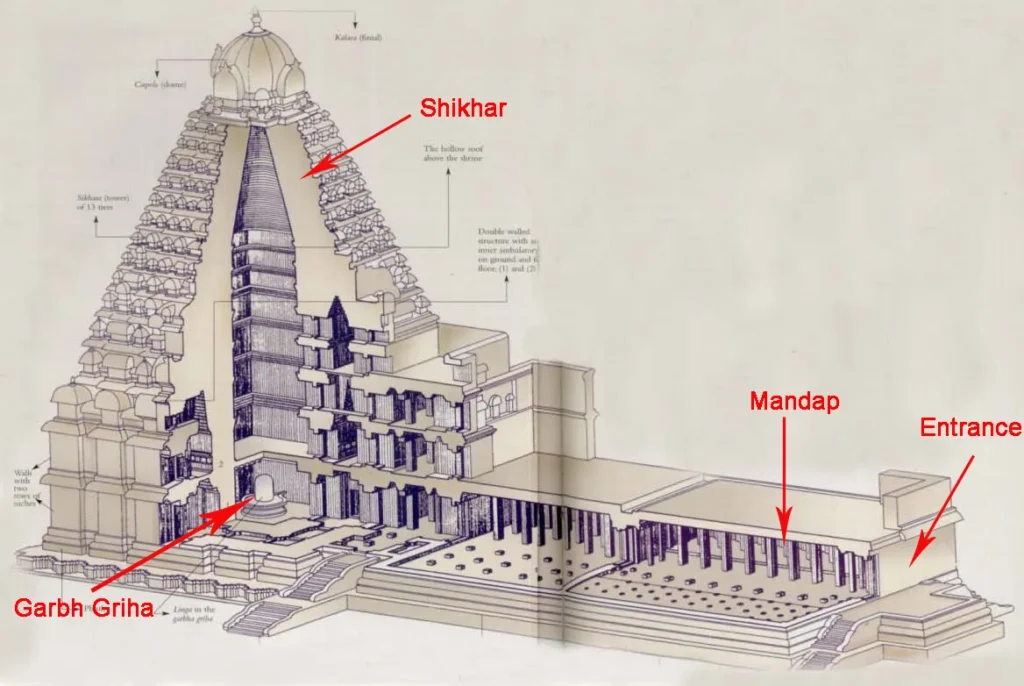
4) Design & Construction (Example)
The main entry is from west
The scheme of the Kailash temple is basically divided into four main parts:
- The entrance Gateway
- An intermediate Nandi shrine
- The body of the temple itself
- The covered passage surrounding the courtyard containing 5 shrines
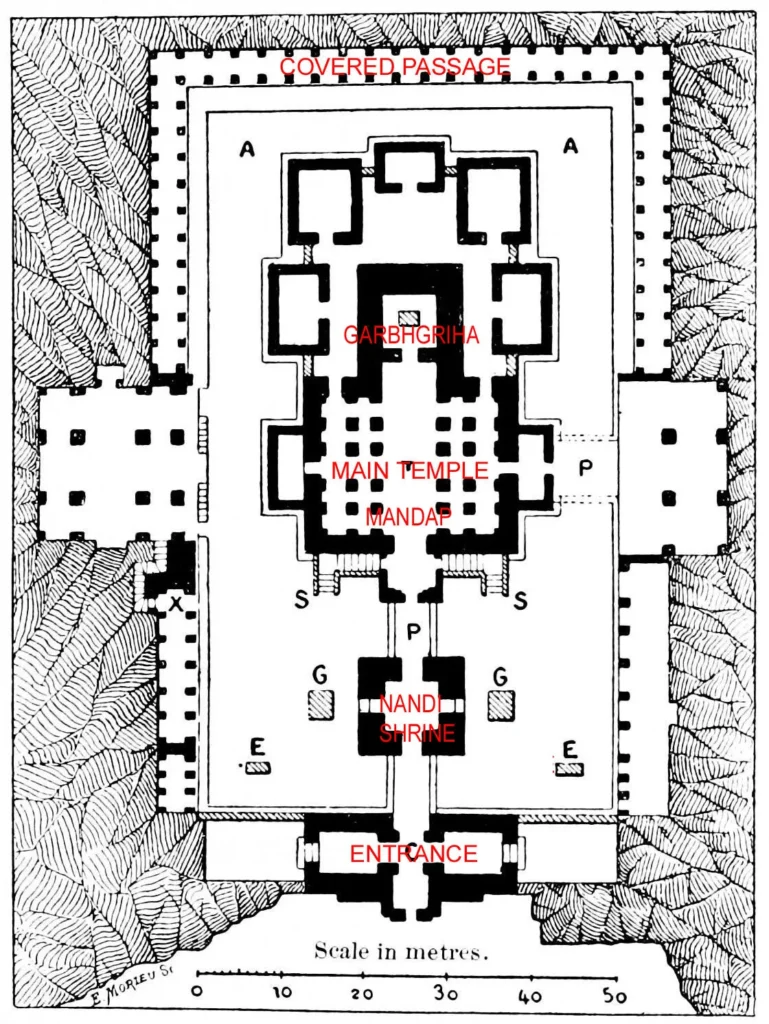
PLAN OF KAILASH TEMPLE
i) The entrance gateway
The gateway of the temple is double storied and opens into inside courtyard
The deities at the left of the entrance are Shaivaite (followers of Shiva) while on the right-hand side the deites are vaishnavaites (followers of Vishnu)
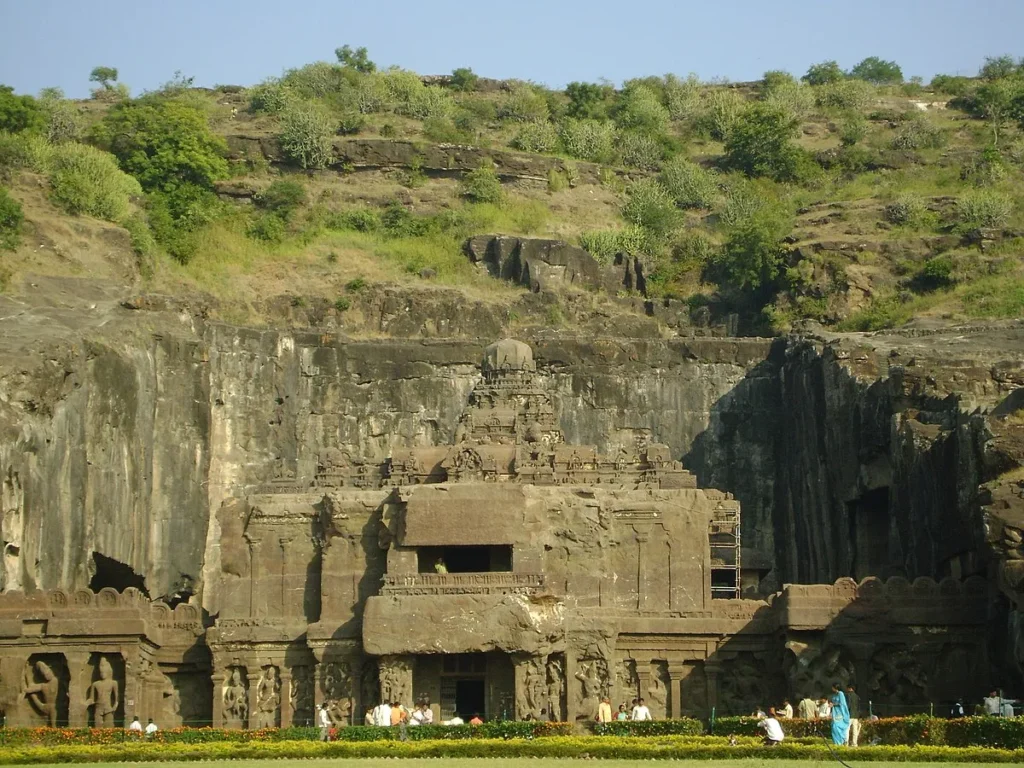
MAIN ENTRANCE OF KAILASH TEMPLE
ii) The Nandi Shrine

NANDI SHRINE OF KAILASH TEMPLE
- The statue of holy bull ( Nandi ) is placed inside it
- The size of the shrine is 6m x 6m and it is detached from the main structure but connected with bridge
- The upper story is connected with the bridge to the main enterace and to the mandap
- It has balconied windows on all the for sides
- On either sides of it there are two free standing pillars known as ‘ Dwaja-Stambhas’ are located
- They are 15m high

PLAN OF KAILASH TEMPLE
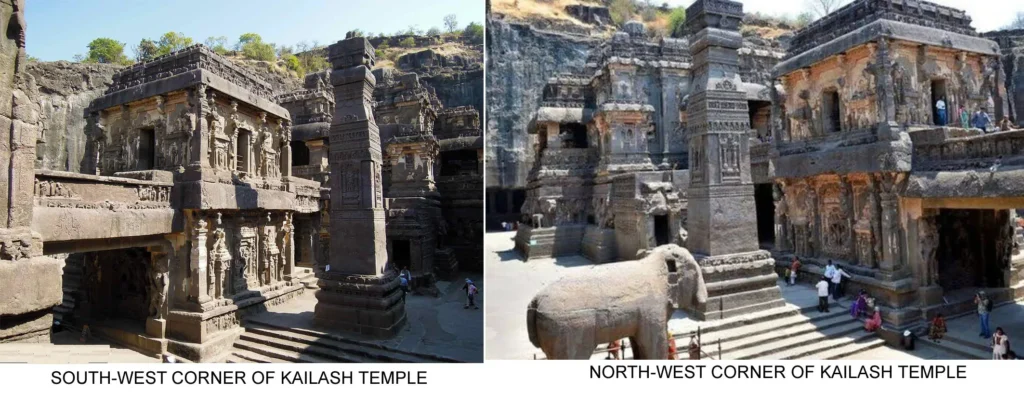
CORNER OF KAILASH TEMPLE
iii) The Temple
It is a double storied (each 7m high) structure placed after the Nandi Shrine
The main temple body has two structures namely
- Mandap
- Sanctum

THE MAIN TEMPLE
a) Mandap
The mandap measures 21m x 19m and supported by 29.3m high 16 square pillars in a group of 4.
The main body of the temple stands on a high plinth which is beautifully carved with sculptures of elephants and lions
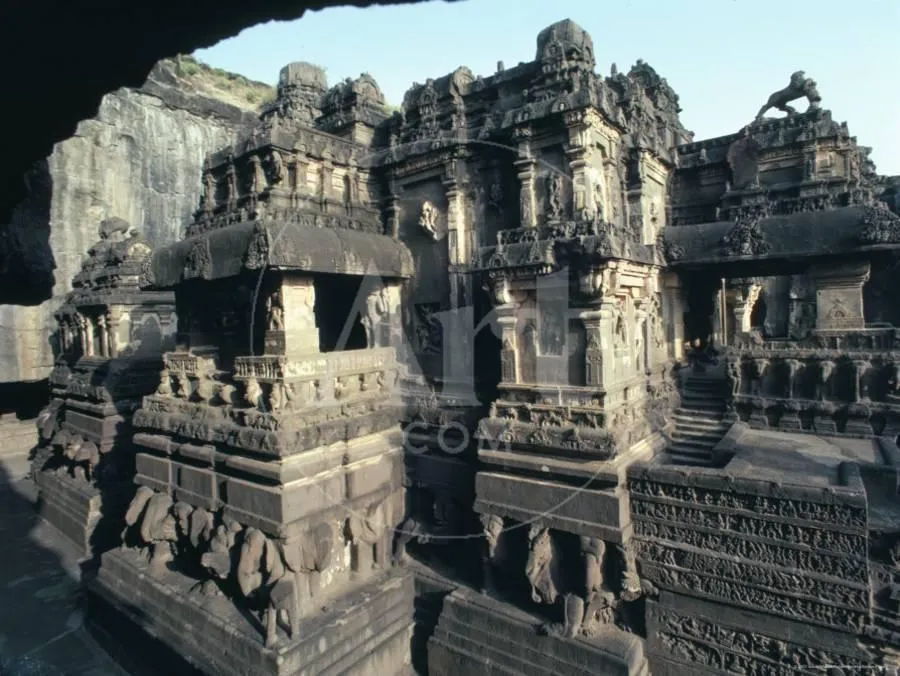
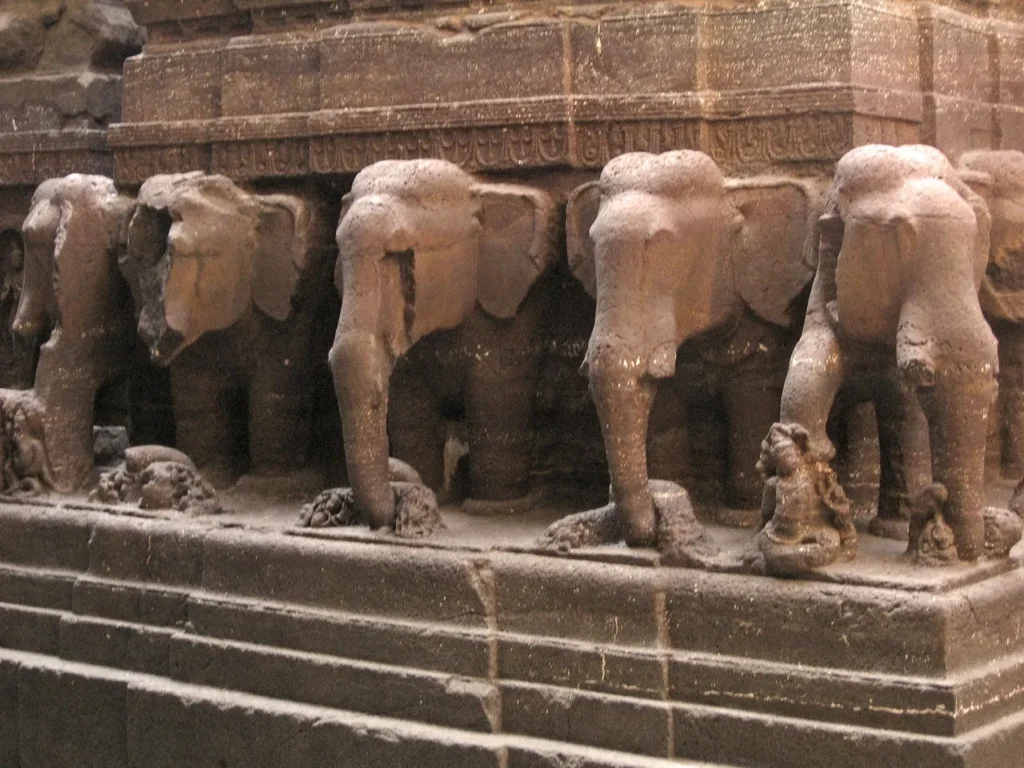
CARVED SCULPTURE OF ELEPHANT IN THE PLINTH
b) Garbhgriha
- The garbhagriha is dedicated to Siva
- Ramayana and mahabharata scenes are beautifully depicted on the outer walls
- It is a tall pyramidal structure similar as of a south indian Dravidian temple

GARBHGRIHA OF KAILASH TEMPLE
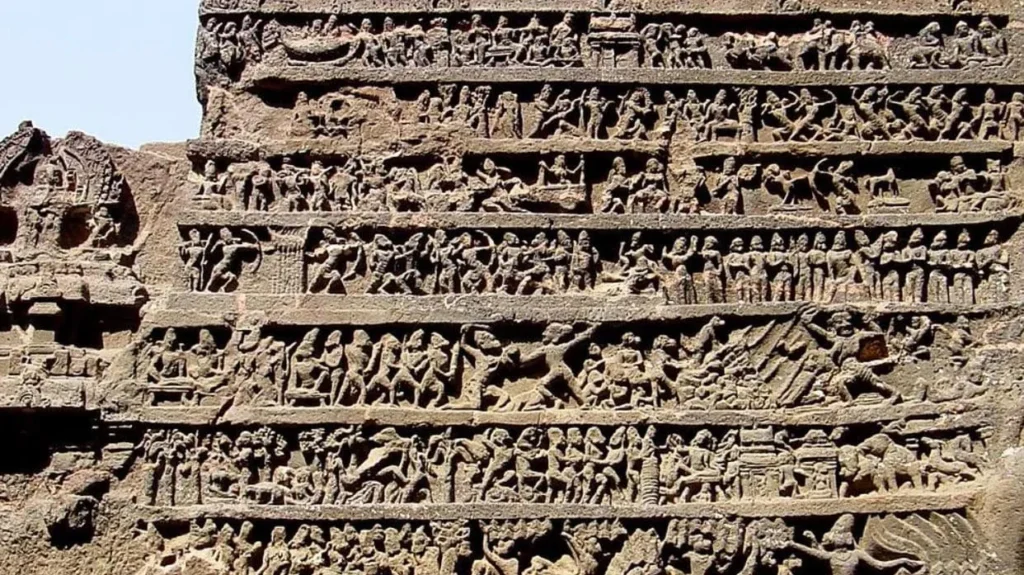
STORIES OF RAMAYAN IN CARVED ON THE WALL
These are some of the key components of a Hindu temple, but there may be other elements present as well, depending on the region and the specific tradition.
Amazing showcasing of the truth and reality of temple architecture. Magnificent sketches depict our temple architectural styles. Humble request: May I get one clear and complete picture about the same?
“The main body of the temple stands on a high plinth which is beautifully carved with sculptures of elephants and lions.”
…regards